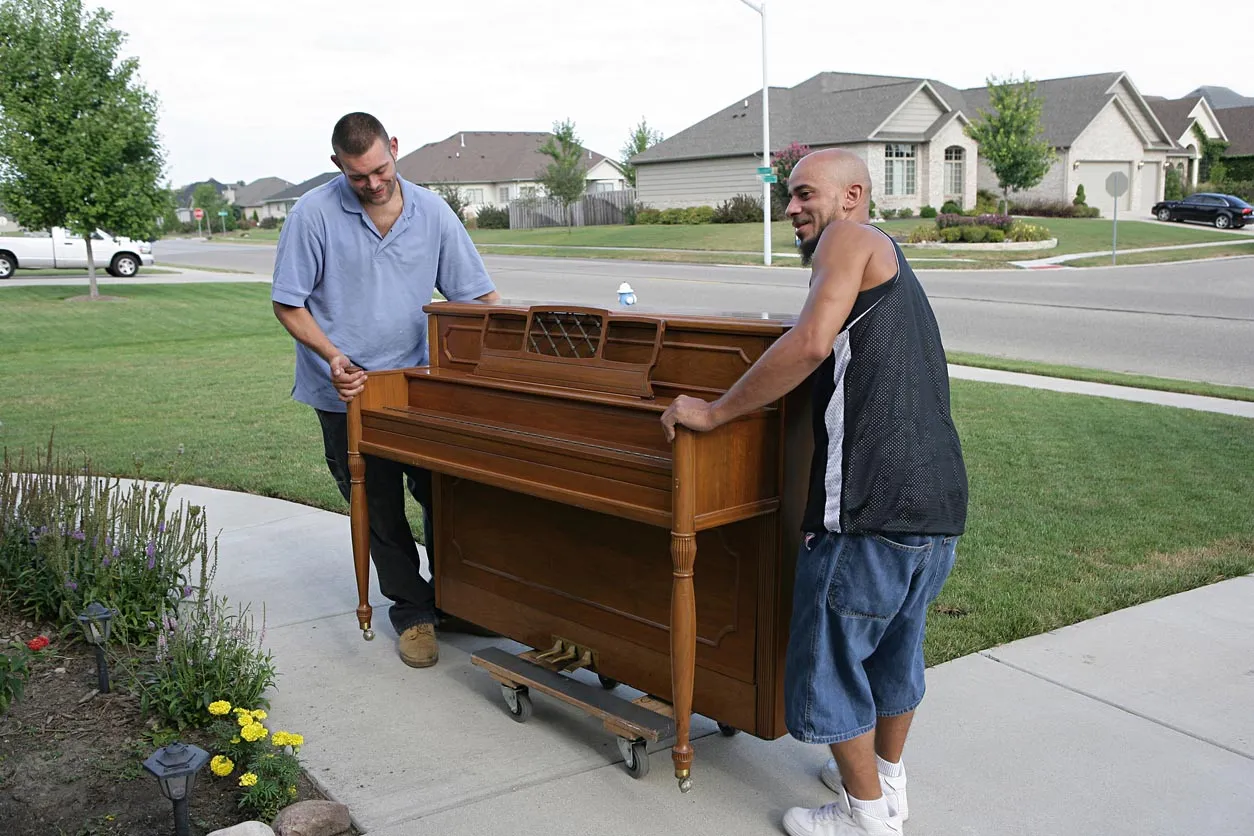Relocating a piano is not just about moving a piece of furniture; it’s about handling a delicate and often expensive instrument. Whether you’re moving a grand piano, an upright, or a digital model, ensuring the safety and efficiency of the move is paramount. Here we provide essential considerations to help you plan a secure and effortless piano move.
1. Understanding the Complexity of Your Piano
Pianos vary significantly in size, weight, and structure. Grand pianos, for example, can weigh anywhere from 500 to 1200 pounds, while upright pianos are slightly less hefty but still require careful handling due to their intricate internal mechanisms. Knowing the type of piano and its specific characteristics is crucial in planning the move, as each type requires different handling and transportation methods.
2. Hiring Professional Piano Movers
While it may be tempting to save money by moving the piano yourself or with the help of friends, the risk of damage to the piano or injury to the movers is high. Professional piano movers are equipped with the necessary skills, experience, and equipment to handle your piano safely. They will have specialized tools such as piano boards, dollies, and straps, which are essential for securing the piano during the move. For more information, visit https://www.shiply.com/de/spezialtransporte/klaviertransport.php
3. Preparing the Piano for the Move
Before the move, it’s important to prepare the piano properly. This involves locking down the keyboard lid to prevent it from opening and securing any movable parts. In the case of grand pianos, this also means removing the legs and wrapping the body securely to prevent scratches or other damage. Ensure that the entire piano is covered with blankets or padding to protect its surface.
4. Planning the Route
Assess the route that the piano will take from its current location to its new home. Consider all doorways, staircases, and hallways for potential obstacles. Measure all passages to ensure the piano can fit through comfortably, and plan for any tricky areas where turning the piano might be necessary. If the move involves stairs, ensure the movers are prepared with the right tools and strategies to handle them.
5. Climate Considerations
Pianos are sensitive to changes in temperature and humidity, which can affect their tuning and wooden components. If you are moving to a different climate, consider how the change might impact your piano. It’s also wise to protect the piano from exposure to extreme conditions during the move. For instance, avoid moving the piano in rainy or snowy weather if possible.
6. Insurance and Liability
Ensure that your piano is insured during the move. Check whether your home insurance covers moves or if you’ll need additional insurance from the moving company. This will provide peace of mind in the unlikely event that your piano is damaged during the move. Additionally, verify that the moving company has adequate liability insurance to cover injuries to their workers.
7. Setting Up at the New Location
Once the piano arrives at its new location, it’s not just a matter of unloading and placing it anywhere. The spot where the piano will live needs to be chosen carefully. Avoid placing it near heating vents, doors, or in direct sunlight, as these can adversely affect its condition and tuning. After the piano is placed, give it some time to acclimate to its new environment before tuning it. It’s usually recommended to wait a few weeks before having the piano tuned, as it needs time to settle.
8. Continuous Care and Maintenance
After the move, regular maintenance is crucial to keep your piano in top condition. This includes regular tuning, cleaning, and in some cases, regulating and voicing by a professional. Proper care will not only maintain the sound quality and playability of your piano but also preserve its value over time.
Conclusion:
Moving a piano involves more than simply transporting an item; it’s about careful handling of a valuable and cherished musical instrument. By understanding the specific needs of your piano, hiring the right professionals, and taking the necessary precautions, you can ensure a safe and smooth move. Remember, the effort and expense involved in moving a piano professionally are worthwhile investments in preserving its sound, playability, and value for years to come.
